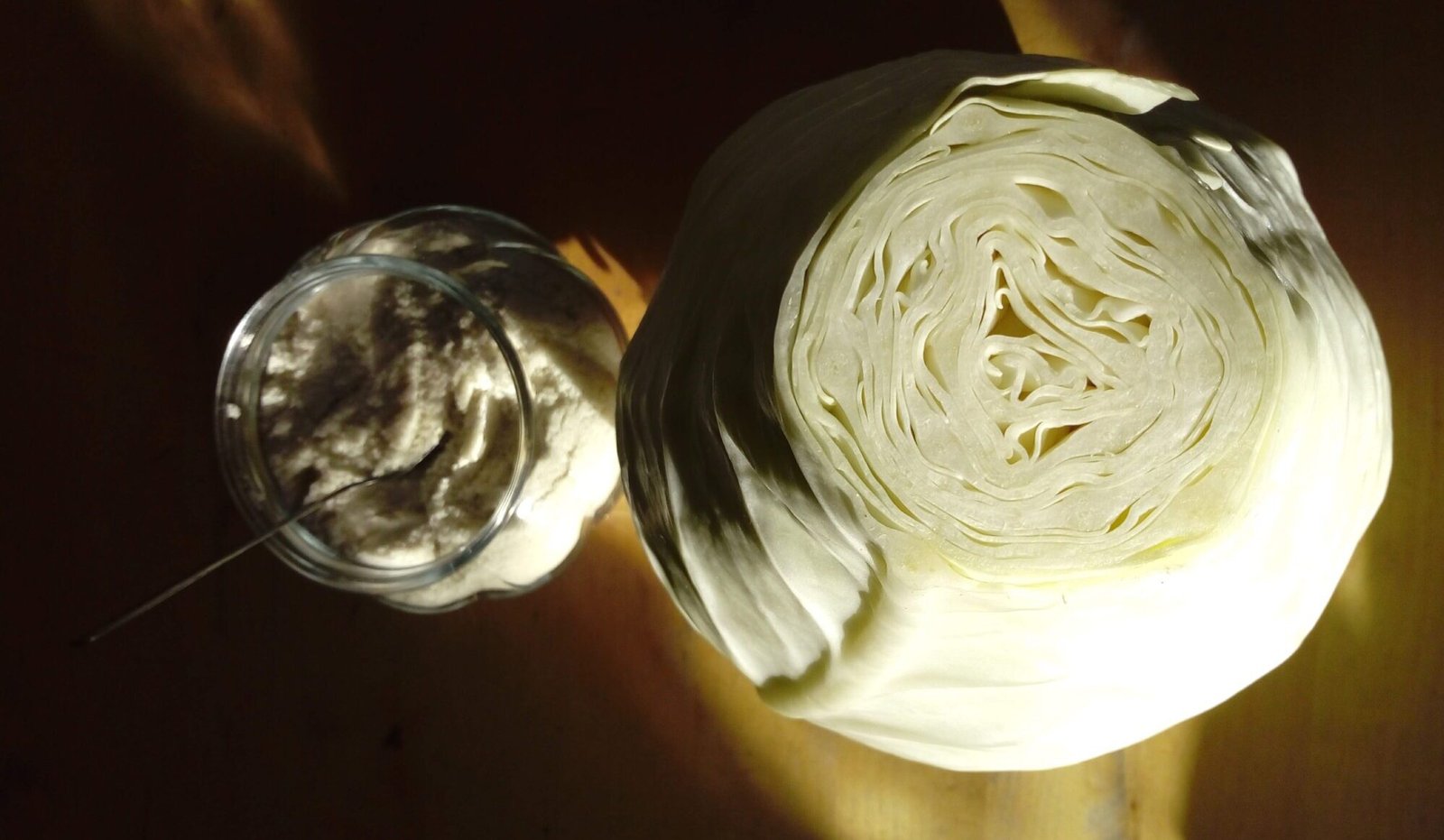Sauerkraut is one of the most well-known and consumed forms of lacto-fermented vegetables in Europe and the USA, and it has been produced in various ways worldwide for thousands of years. The basic recipe involves shredded cabbage and salt. Caraway seeds and juniper berries are popular seasonings, but you can also try using rowan berries, black pepper, and even sea buckthorn. Finely chop the cabbage by hand (big sharp knife is recommended), use a cabbage slicer or a food processor/vegetable cutter.
For a more detailed description of the lacto-fermentation process and how sauerkraut is made, check here.
Ingredients:
10kg finely shredded cabbage
150g salt
20g caraway seeds



Here’s how to make it:
Alternate the shredded cabbage with salt and caraway seeds, press or pound it to release the cabbage’s own juices until it is nice and wet.
Place a weight or a plate on top, seal with a lid and airlock. Let it sit at room temperature (18-23°C) for two weeks, then transfer to a cool place for at least two weeks.
Try using red cabbage, savoy cabbage (strong flavour) or mix red and white cabbage to get a lovely pink kraut. Red cabbage seasoned with black peppar and whole cloves makes a delightful addition to a Christmas dinner.
Experiment with adding chili, ginger, garlic, leek, and a little bit of carrot to create a kimchi-style sauerkraut, or incorporate ingredients from the wild, such as rowan berries, nettles (blanch them first), mushrooms (blanch them first), ground elder, wild apples, etc.
Sauerkraut with wild plants
Sauerkraut can also serve as a base for incorporating edible wild plants and perennial vegetables into your meals – mix in up to 30% of your favourite wild plants. However, there may be some seasonal limitations since most edible wild plants are at their best in spring, so you’ll need to use cabbage that has been stored over the winter. Check out Pascal Baudar’s book “Wildcrafted Fermentation” (link on the resource page) and his Instagram account for more inspiration. If you want to learn more about perennial vegetables, take a look at the book “Perennial Vegetables” and the website Perennial Vegetables (its in Swedish).



